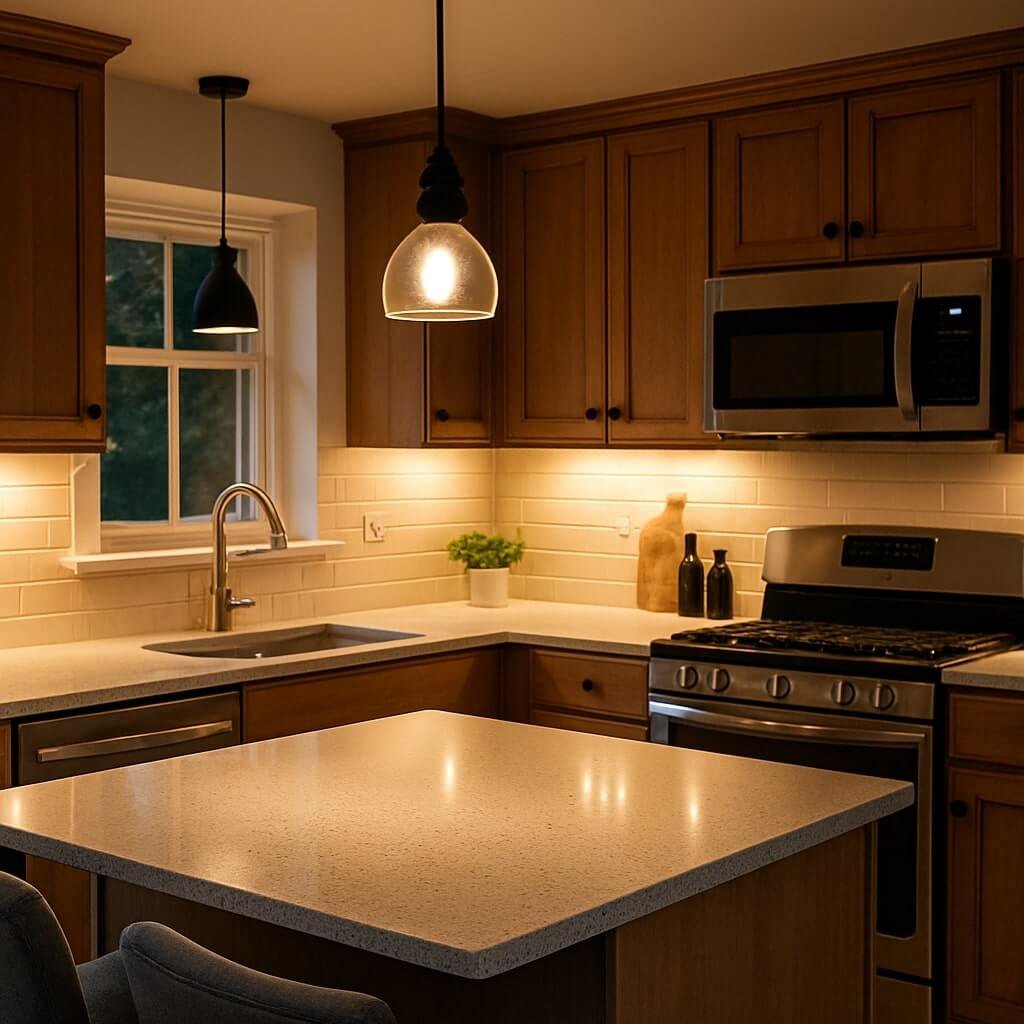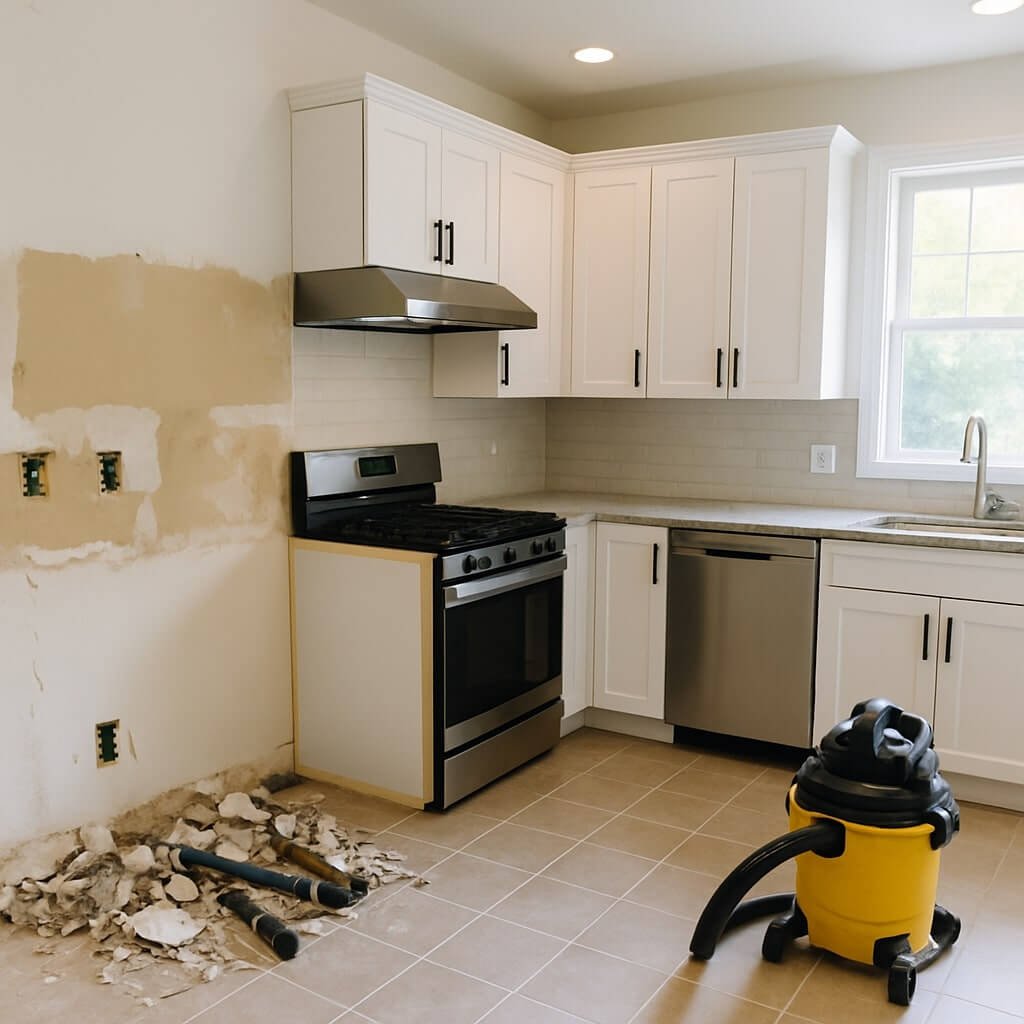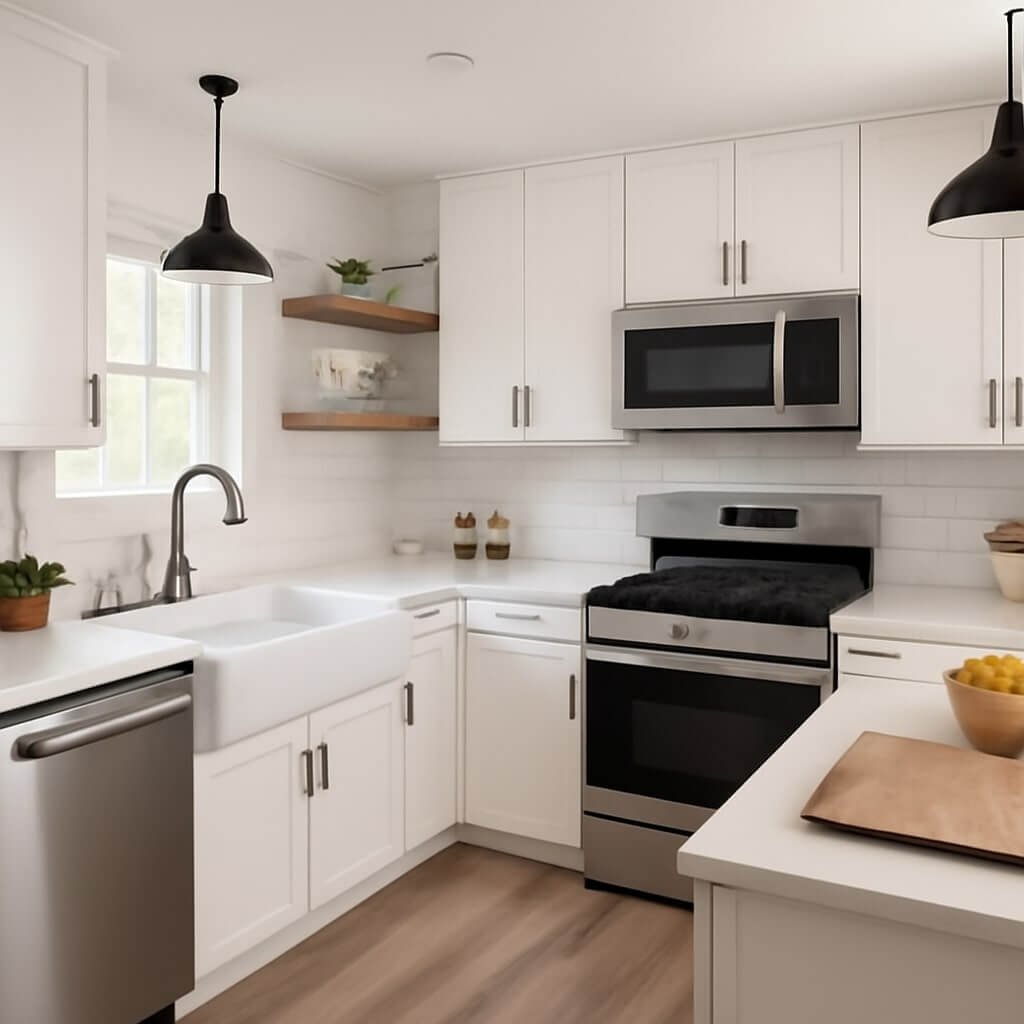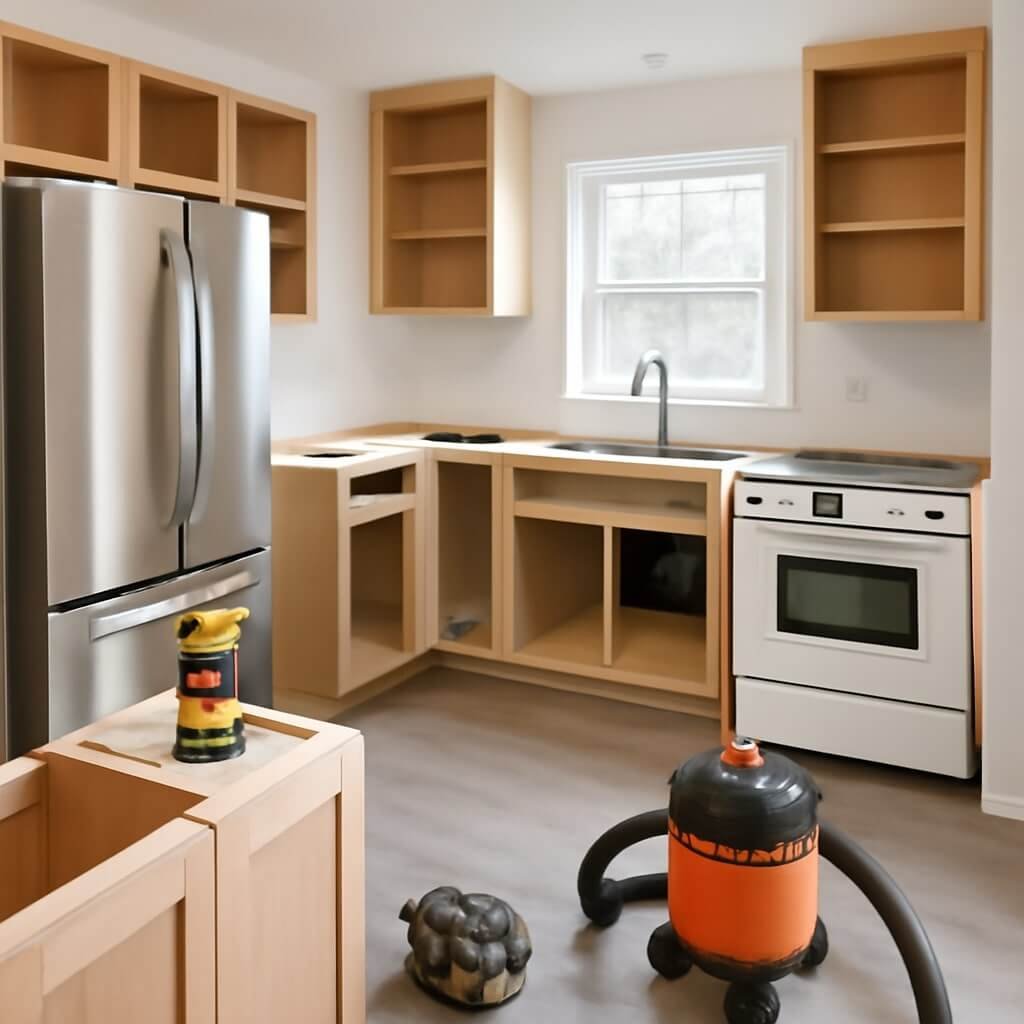A bright, welcoming kitchen doesn’t have to come with high energy bills. Whether you’re renovating or just looking to reduce costs, updating your kitchen lighting can significantly improve energy efficiency. From choosing the right bulbs to installing smart systems, these expert tips will help you light up your space and save money at the same time.
Why Energy-Efficient Kitchen Lighting Matters
The kitchen is one of the most used areas in any home, and also one of the most energy-hungry. Between cooking appliances, ventilation, and lighting, energy costs can pile up quickly. Efficient lighting reduces electricity consumption, cuts monthly bills, and lowers your carbon footprint — all without sacrificing style or brightness.
Top Energy-Saving Kitchen Lighting Tips
1. Switch to LED Bulbs
LED bulbs use up to 90% less energy than traditional incandescent bulbs and last up to 25 times longer. Opt for Energy Star–certified LEDs to ensure maximum efficiency.
Pro Tip: Choose warm white LEDs (2700K–3000K) for a cozy atmosphere, or cool white (4000K–5000K) for task lighting around countertops and islands.
2. Use Task Lighting Where Needed
Instead of flooding the entire kitchen with overhead lighting, install task lighting under cabinets or over prep areas. This focuses light where you need it most and avoids wasting energy.
Examples include:
- Under-cabinet strip lights
- Pendant lights above islands
- Adjustable spotlights over sinks
3. Install Motion Sensors or Dimmers
Adding motion sensors ensures lights turn off automatically when not in use. Dimmers allow you to adjust brightness levels, reducing power usage when full lighting isn’t necessary.
Smart tip: Use dimmers with LED-compatible switches for maximum savings and control.
4. Take Advantage of Natural Light
Maximize daylight during the day by using sheer window coverings or adding skylights. Natural light reduces the need for artificial lighting and improves the kitchen’s overall ambiance.
5. Choose Light Fixtures Wisely
Opt for fixtures that enhance LED bulb performance, such as those with reflective surfaces or open designs. Avoid bulky shades or materials that block light output.
Bonus Tips for Smart Lighting
- Install smart bulbs or switches: Control lighting remotely via smartphone or voice assistants like Alexa or Google Home.
- Use lighting zones: Set up specific lighting areas for prep, dining, and storage.
- Regularly clean light fixtures: Dust and grease can block light, causing you to use more bulbs or higher wattage.
Cost Savings Breakdown
| Upgrade | Estimated Annual Savings |
|---|---|
| Switching to LEDs | $75–$200 |
| Installing motion sensors | $25–$50 |
| Using dimmers effectively | $20–$40 |
| Maximizing daylight | Up to $50 |
These savings add up — not just in dollars, but in long-term sustainability.
Easy DIY Projects to Start Now
- Replace all kitchen bulbs with LED equivalents.
- Add stick-on under-cabinet LED strips (no wiring needed).
- Install a plug-and-play smart dimmer switch.
Final Thoughts
Efficient lighting is one of the simplest yet most powerful ways to save money in the kitchen. Whether you’re making small upgrades or embracing smart tech, these tips can reduce energy use and improve your kitchen’s functionality and style.
FAQs About Energy-Saving Kitchen Lighting
What type of lighting is best for kitchens?
LED lighting is the best choice for kitchens due to its energy efficiency, long lifespan, and versatility in color temperature and brightness.
Are motion sensor lights practical in kitchens?
Yes! They’re especially useful for pantry areas, under-cabinet spaces, or as night lights — automatically turning off when not in use.
How much can I save by switching to energy-efficient lighting?
Depending on the number of bulbs and hours of use, you can save $100–$300 per year on lighting costs alone.
Are smart lighting systems worth the investment?
If you want convenience and maximum control over your kitchen’s lighting, smart systems are a worthwhile investment. They allow scheduling, dimming, and voice control, which enhance energy efficiency
Does kitchen lighting affect resale value?
Yes. Modern, energy-efficient lighting can increase a home’s appeal and value, especially in kitchens, which are major selling points for buyers.




